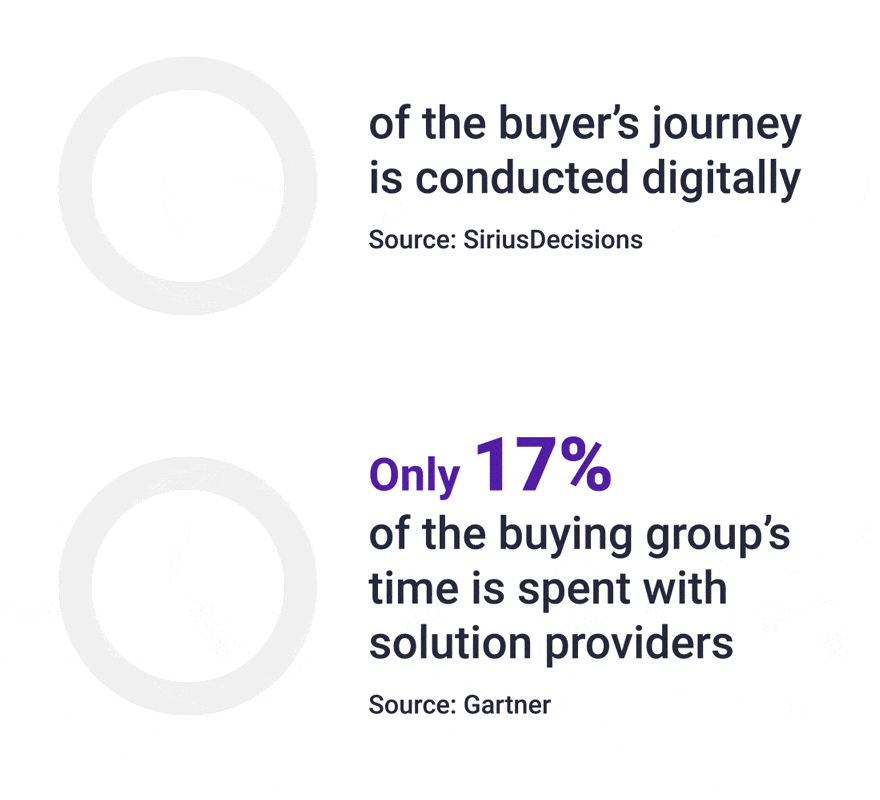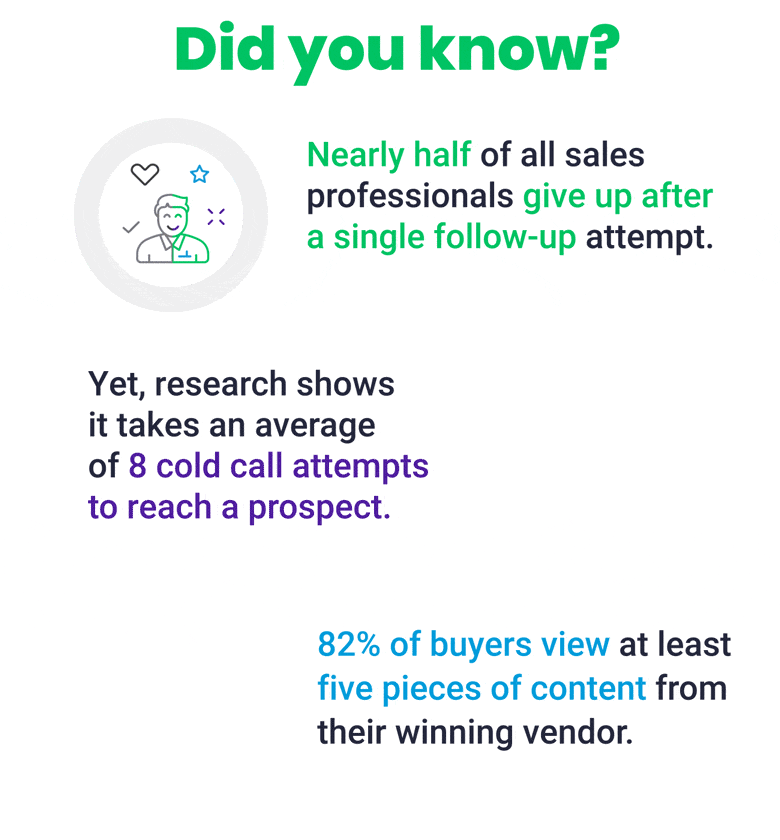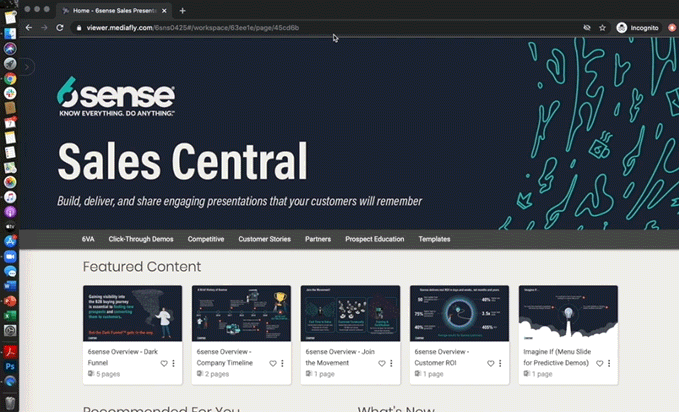Dynamic selling is about aligning your selling plan to the customer’s buying process. Every customer (or group of customers when you’re selling into a business) has a different decision-making and purchasing process, which is why the selling process should be flexible enough to meet their needs. It requires developing relationships and making the effort to understand how your customers make decisions, what needs to happen, and when it needs to happen.
Dynamic Selling is the New Relationship Selling
Developing relationships to close deals isn’t a new concept. We all remember relationship selling. But there is one key difference that gives sellers who leverage dynamic selling a leg up.
When relationship selling, sales reps prioritize building a connection with potential customers to close sales. They take interest in the buyer’s world to build rapport, earn trust, and eventually secure a deal. People buy from people they like, right?
Not quite. While that may have worked in the past, today’s sellers need to bring more than just likeability to the table. In 2021, it is harder than ever for B2B buyers to build a business case for new products and services, justify the cost of business purchases, and get key stakeholders on board.
“I really like the sales rep” is not a good enough reason to buy.
Sellers who take a dynamic selling approach focus on offering the right content, tools, and resources at the right times throughout the buying process to earn the buyer’s trust and help them build a business case for the product or service.
In the buyer’s mind, the seller transitions from sales rep to trusted advisor, offering prescriptive advice on how the buyer can leverage products or services to overcome challenges and meet business goals. Building a connection is a natural byproduct of offering dynamic, personalized, and educational information to help the buyer achieve what she set out to do.
Interested in adopting a dynamic selling approach? Here are 7 tips to help you set yourself up for success:
1. Understand How Buyers Find Suppliers in Today’s World
67% of the buyer’s journey is now done digitally. And only 17% of a buying group’s time is spent meeting with potential suppliers. This means sellers have less influence over the buying process than ever – and marketers have more. Don’t neglect the early stages of the buyer journey just because they happen before the hand-off to sales does. Now an extension of your sales team, your marketers should ensure your website and digital content educates buyers with practical information, insights, ideas, and new perspectives.

In the early stages of self-guided research, buyers look to experts who offer valuable information and important insights about typical challenges or business problems. Consider deploying an AI-powered content hub that dynamically tailors content suggestions to buyers in real-time on your website to help you ensure every prospect receives the right information at the right time and make the hand-off from sales to marketing much more seamless.
2. Remember, It’s All About the Customer
If you’re leading with your product pitch, you’re doing it wrong. To make a confident purchase decision, today’s buyers need to understand the value they’ll gain from using your product or service. Our CLOSE conversation framework can help your sellers navigate away from a traditional product pitch to a challenge-centric conversation that focuses on the buyer’s business problems, how to solve them, and what they’ll gain from your solution.

To make sales conversations even more dynamic and collaborative, you may also deploy an ROI or TCO calculator. These value selling tools require the buyer to provide data about her business. The seller plugs the information into the calculator and uses the output to guide a tailored and personalized discussion in real-time. These tools can help you differentiate your offering at any stage of the buyer’s journey – on your website, in live sales meetings, or in executive business reviews with existing customers.
3. Your Sales Process Should Mirror Your Prospects’ Decision-Making Process
Dynamic selling mirrors prospects’ buying practices. Over time, team members become more adept at knowing what they need to know, accomplish and share at each stage of the buying journey in order to answer customer needs appropriately. Salespeople and marketers alike, however, know that customer needs aren’t static. They can be as volatile as markets and rapidly evolving technologies. With that in mind, today’s sellers need to be flexible. They need to listen to customers, pay close attention, and develop the capacity to detect trends in the buying process so they’re not caught off guard.
Using a sales enablement platform that makes AI-driven content recommendations to sellers based on the buyer’s interests, behavior, and similar customers can help you automate some of this. Tracking content usage (what content sellers are leveraging for specific sales stages, industries, challenges, etc.) and content consumption (what content resonates with buyers and how they interact with it at various stages of the buying process) can also provide valuable insights into what content works and what doesn’t so you can optimize accordingly and build sales best practices.
4. Adopt Tools for Digital and In-Person Selling
I’ll be blunt. The last 16 months have been a total crap shoot. And none of us are really sure what’s going to happen next. Will people return to work in droves? Will work-from-anywhere be the “next normal”? Will we pack away those breadmakers forever? Nobody is really sure.
Moving forward, sales organizations will be required to sell wherever the buyer wants to buy. That means to set your team up for dynamic sales success, you’ll need to ensure any tools and technologies you implement support both in-person and digital sales scenarios. And today’s “touchless” culture means you’ll probably want to nix the paper brochureware.
Check out this snazzy digital flyer for a modern alternative.
5. Redefine What “Closing” Means
The phrase “always be closing” doesn’t mean what it did a generation ago. In today’s subscription-based culture, it’s not just about getting a signature on the contract and moving on to the next. As a SaaS solution provider, we at Mediafly have to earn our customers’ business every day. If we’re not constantly innovating and proving our value, we know they’ll go elsewhere.
Revisit the ROI and TCO calculators I mentioned earlier in this post (#2!). Effectively quantifying and communicating the value you provide to your existing customers is a foolproof way to answer “what have you done for me lately?” at renewal time.
6. Master the Art of the Follow-Up
Did you know nearly half of all sales professionals give up after a single follow-up attempt? Yet, research shows it takes an average of 8 cold call attempts to reach a prospect and 82% of buyers view at least five pieces of content from their winning vendor.

Use sales enablement technology to put relevant and engaging content and information at sellers’ fingertips. Track and measure what content helps move deals forward at every stage of the buyer journey so you can duplicate sales success. And don’t forget, timing is everything. Follow-up with new leads quickly and answer buyer questions in a timely manner to increase your odds of success.
7. Develop a Dynamic “Playbook” For Each Opportunity
In today’s selling environment, creating a fixed sales “playbook” to use with every potential customer won’t get results – at least not the ones you want. Fortunately, technology makes it easy enough to create a dynamic playbook for each prospective deal.
Not convinced? Check out this Mediafly Workspace in action.

Workspaces are easy-to-build microsites created for a specific use case, interaction, or buyer. Creating a workspace is a great way to offer a relevant, targeted, and dynamic content experience tailored to what’s most important to a unique buyer. Did I mention you can track how they interact with each asset within the Workspace? You can see who they share the content with (hello, other key stakeholders), how long they spend on a particular asset, and how many times they revisit each piece of content.
More than 50% of customer loyalty is based on the sales experience. Use a dynamic selling approach to ensure your buyers are getting exactly what they need to make a confident purchase decision at every step of their buying journey, and you’ll create lifelong customers.
Want to learn more about how sales enablement technology can help you formulate your dynamic selling approach? Download our sales enablement toolkit to learn more.

Comments are closed.